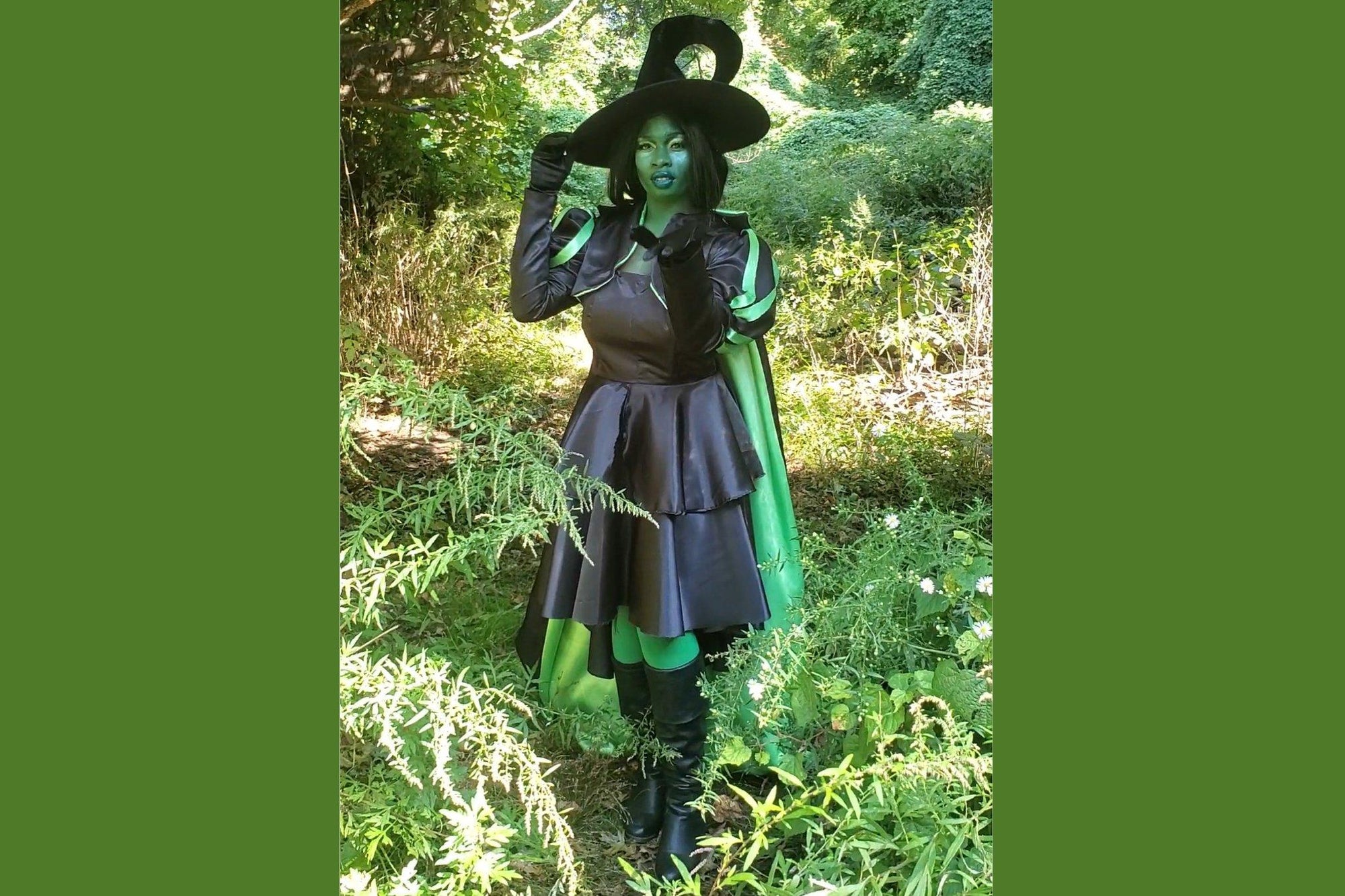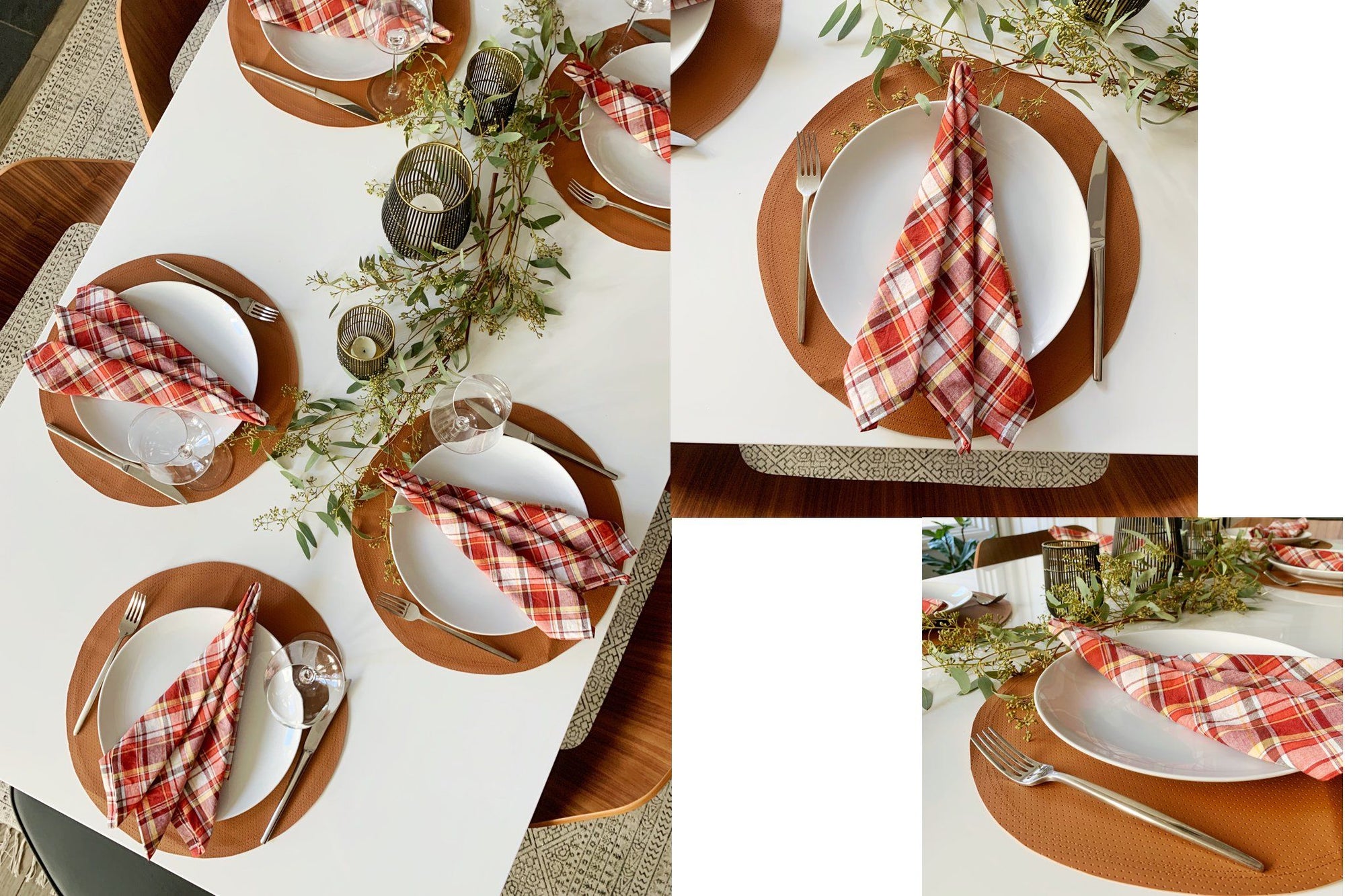DIY Pot Holder and Lunch Bag Sewing Tutorial
In keeping with the theme of giving, I've come up with two more projects you can DIY to give to your loved ones this year. These projects in particular are geared towards the foodies in your life. First up, we have a pot holder for the people in your life who love to cook. After that, we have a lunch bag so they can pack up all of their delicious leftovers to go and keep them fresh.
Part 1: Quilted Pot Holder
Supplies:
- 1 yard African print fabric
- 1 yard terry cloth fabric
- 1 yard Insul-Bright
- Thread
- Chalk
- Walking foot
- Fabric scissors
- Ruler
Time:
3-4 hours
Difficulty:
Medium
LET'S GET STARTED!
- Wash and dry all of your fabric before you begin, making sure to finish the raw edges so they don't fray. Press to prepare for cutting.
- Cut one 9" x 9" square and one 7" x 9" rectangle out of your African print fabric, your terry cloth fabric and your Insul-Bright. You will also need to cut about 60" of 2" wide bias strips out of your African print fabric.

- Take your African print fabric pieces and use your chalk to draw out your quilting lines on the right side of it. I drew my lines to be 1" apart on a 45 degree angle going in both directions so that they intersected to make diamonds.

- Stack your squares and your rectangles so that the right sides of your African print fabric and your terry cloth are facing out with the Insul-Bright sandwiched in between. Pin sporadically to prepare for quilting.

- Stitch along all of your quilting lines without backstitching. For quilting, a walking foot is best to help make sure your fabric is being distributed through your machine evenly. This is especially helpful on thick pieces of fabric like we have here.

- For my quilting, I used a purple thread that matched one of the flowers as my top thread so that you would be able to see it better and white thread in my bobbin to match the terry cloth.

- Take a piece of bias strip and pin it along the top edge of your rectangular piece. Stitch 1/2" away from the edge.

- Press your bias strip upwards.

- Flip your work over and press the raw top edge of your bias strip in to meet the top edge of your rectangular piece.

- Press your fold from Step 9 over once more to encase your raw edge.

- With the right side facing you, pin your bias binding in place, making sure you catch the folded edge from behind. Stitch in the ditch.

- Pin your rectangular piece to your square piece. Baste 1/4" away from the edge without turning corners.

- Join the rest of your bias strips as shown in the photo. Press seams open.

- Pin your bias strip all around the raw edge of your potholder, leaving about 2" free at the top left side with at least a 5" tail hanging off the end. Stitch 1/2" away from the edge, rounding the corners rather than making sharp turns.
- Trim your corners to round them out. Press in the raw edge of your bias strip to meet the raw edge of your potholder as you did before. Press over once more to encase your raw edges.

- Pin your bias binding in place from the right side, making sure to catch the fold on the wrong side as you go. Stitch in the ditch starting about 4" from the top left side of your potholder.

- Pin your bias strip down to the gap you left in Step 14. Stitch 1/2" away from the edge.

- Press the bias strip tail hanging off the top left side of your potholder so that the raw edges are folded in to meet each other. Fold in half and press once more.

- Pin the folds of your bias strip tail together from the right side and stitch 1/8" away from the edge until you come to your potholder, where you will finish off by stitching in the ditch again.

- Take your bias strip tail and fold in half, tuck the raw edge under and top stitch in place.

- Finished!
Part 2: Lunch Bag
Supplies:
- Leftover African print fabric and Insul-Bright from Part 1
- 1 yard cotton broadcloth fabric
- 1 yard 1" wide cotton webbing
- 1/2" wide velcro
Time:
2-3 hours
Difficulty:
Easy
LET'S GET STARTED!
- Wash and dry your fabric before you begin, making sure to finish the raw edges so they don't fray. Press to prepare for cutting.
- Cut 2 rectangles that measure 15" x 10" out of your African print fabric, your cotton broadcloth fabric and your Insul-Bright

- Pin your Insul-Bright to the wrong side of your African print fabric all around and baste 1/4" away from the edge without turning corners.

- Cut a 4" long piece of female velcro and pin it to one of your African print fabric pieces vertically going down the center and 4 1/2" down from the top edge. Stitch all around 1/8" away from the edges.

- Cut a 6" long piece of cotton webbing. Pin one raw edge up 1/2" and zig zag stitch in place.

- Cut a 4" piece of male velcro and stitch it going down the center of your cotton webbing from Step 5.

- On the opposite piece of African print fabric from Step 4, cut a 13" piece of cotton webbing for your handle and pin each end 2" in from the side and 4" down from the top. Stitch in place 1/4" away from the raw edge.

- Press your strap going up and top stitch each end with a 1" x 1" box with an "X" going through it as highlighted in pink in the photo.

- Take your 6" piece of cotton webbing and pin going vertically in the center and 2 1/2" down from the top edge on the same piece of African print fabric from Step 7. Stitch 1/4" away from the top edge then press it upwards and top stitch with a 1" x 1" box with an "X" going through it as you did for your strap.

- Take your two pieces of African print fabric and pin them right sides together along the side and bottom edges. Stitch in place 1/2" away from the edge.

- Match each side seam to the bottom seam and mark a line 2" up from the corner. Stitch along this line then cut off your corners leaving about a 1/2" of seam allowance.


- Flip your bag right side out and set aside.
- Repeat Steps 10-11 for your cotton broadcloth fabric.
- Place your cotton broadcloth lining inside of your bag with the wrong sides together. Baste in place 1/4" away from the top edge.

- Cut a bias strip that's at least 22" long by 2" wide.
- Starting at one of your side seams, fold over one end of your bias strip and pin with right sides together all the way around the top edge of your bag, overlapping that fold at the beginning. Stitch 1/2" away from the edge then press upwards.


- Fold over and press the raw edge of your bias binding in to meet the raw edge of your bag as you've done in previous steps. (You may have to turn your bag inside out to make this step easier.) Then fold over and press once more to encase the top raw edge of your bag.
- Pin your bias binding down with the right side facing you and making sure to catch the fold on the wrong side. Stitch in the ditch.
- Press the side seams in towards the center of your bag by about 1"
- Finished!





 Transparent
Transparent
 White
White
 Pink
Pink
 Red
Red
 Orange
Orange
 Ivory
Ivory
 Yellow
Yellow
 Gold
Gold
 Brown
Brown
 Green
Green
 Blue
Blue
 Purple
Purple
 Grey
Grey
 Black
Black
 Multi
Multi
 Abstract
Abstract
 African Print
African Print
 Animal Print
Animal Print
 Baby & Nursery
Baby & Nursery
 Buffalo Check
Buffalo Check
 Camo Print
Camo Print
 Celestial
Celestial
 Chevron
Chevron
 Church
Church
 Damask
Damask
 Embroidered
Embroidered
 Floral
Floral
 Geometric
Geometric
 Gingham Check
Gingham Check
 Houndstooth
Houndstooth
 Licensed
Licensed
 Paisley
Paisley
 Plaid
Plaid
 Polka Dot
Polka Dot
 Sports
Sports
 Stripe
Stripe
 Tie Dye
Tie Dye